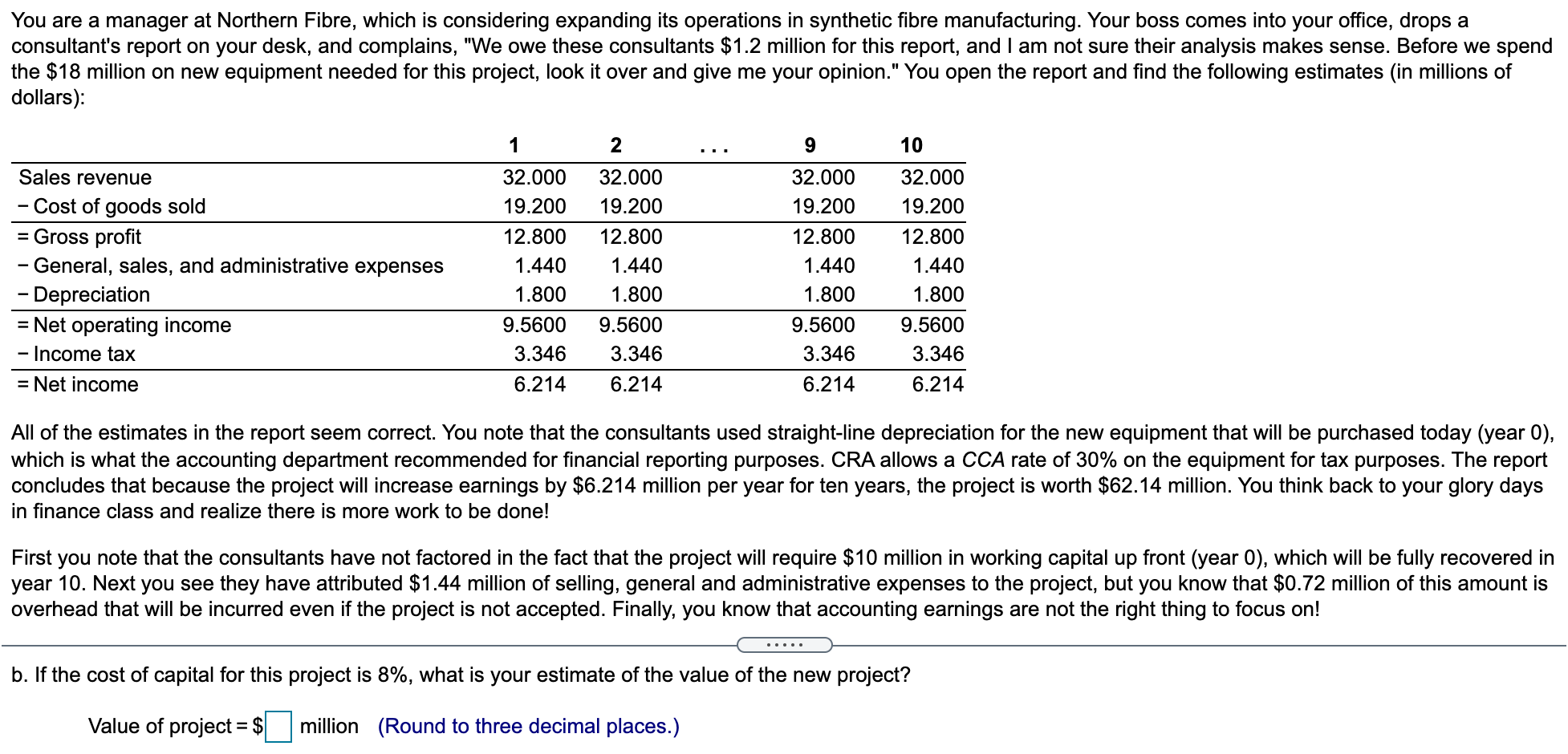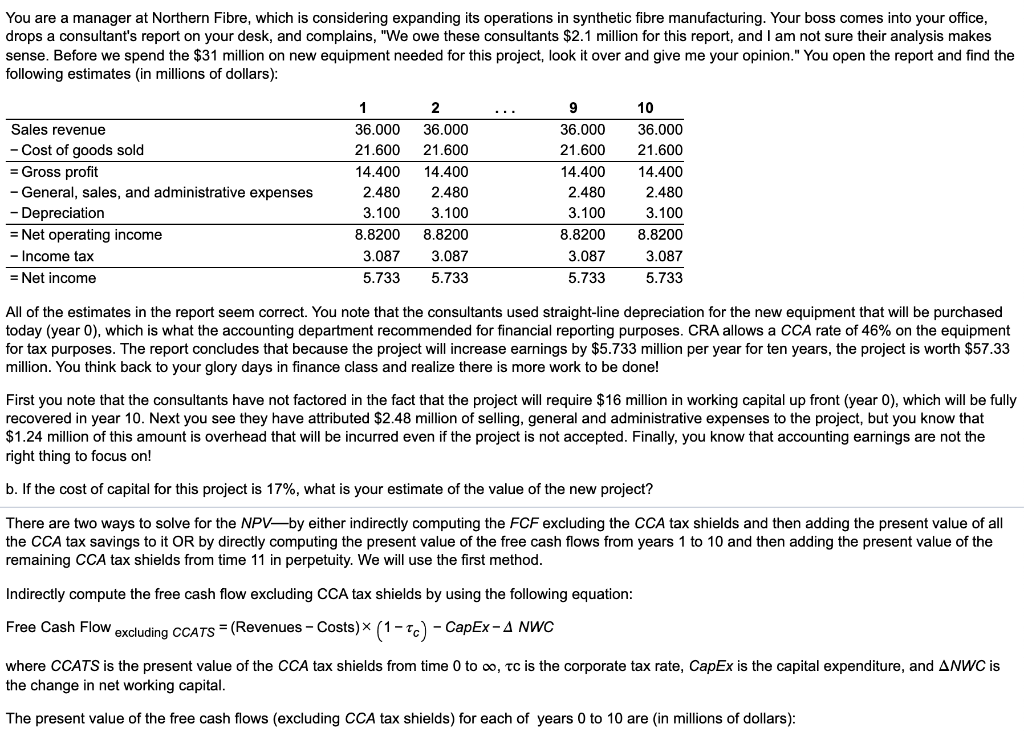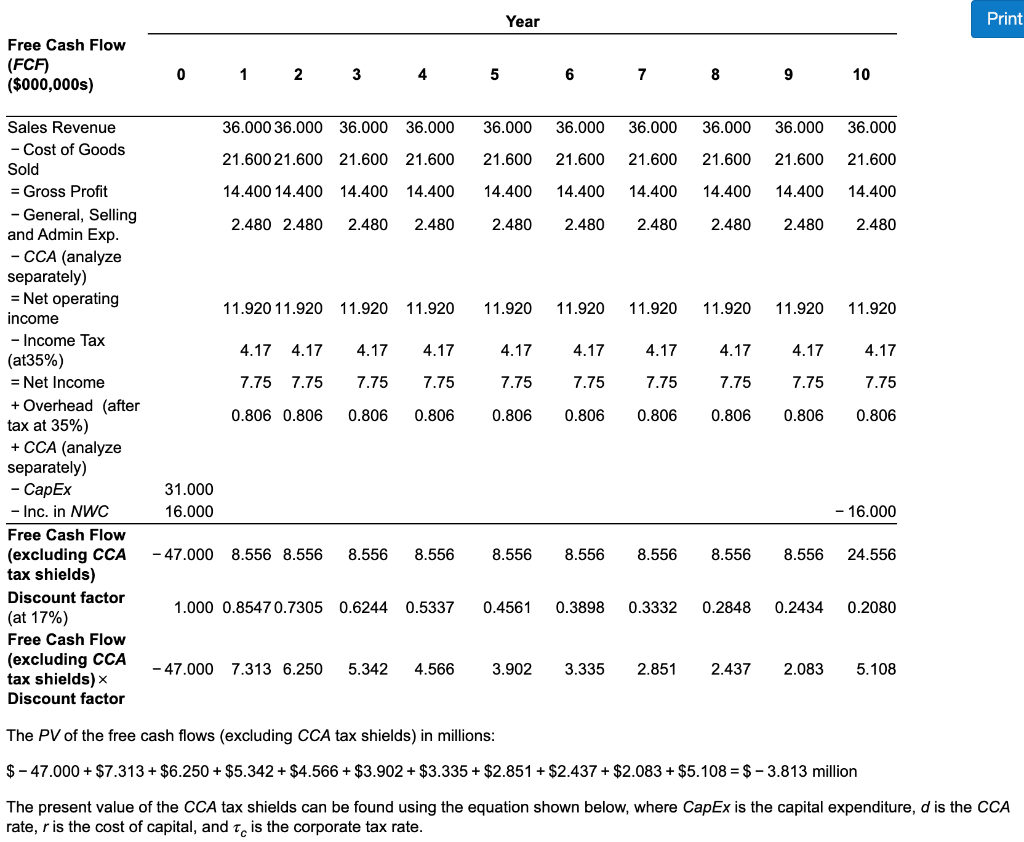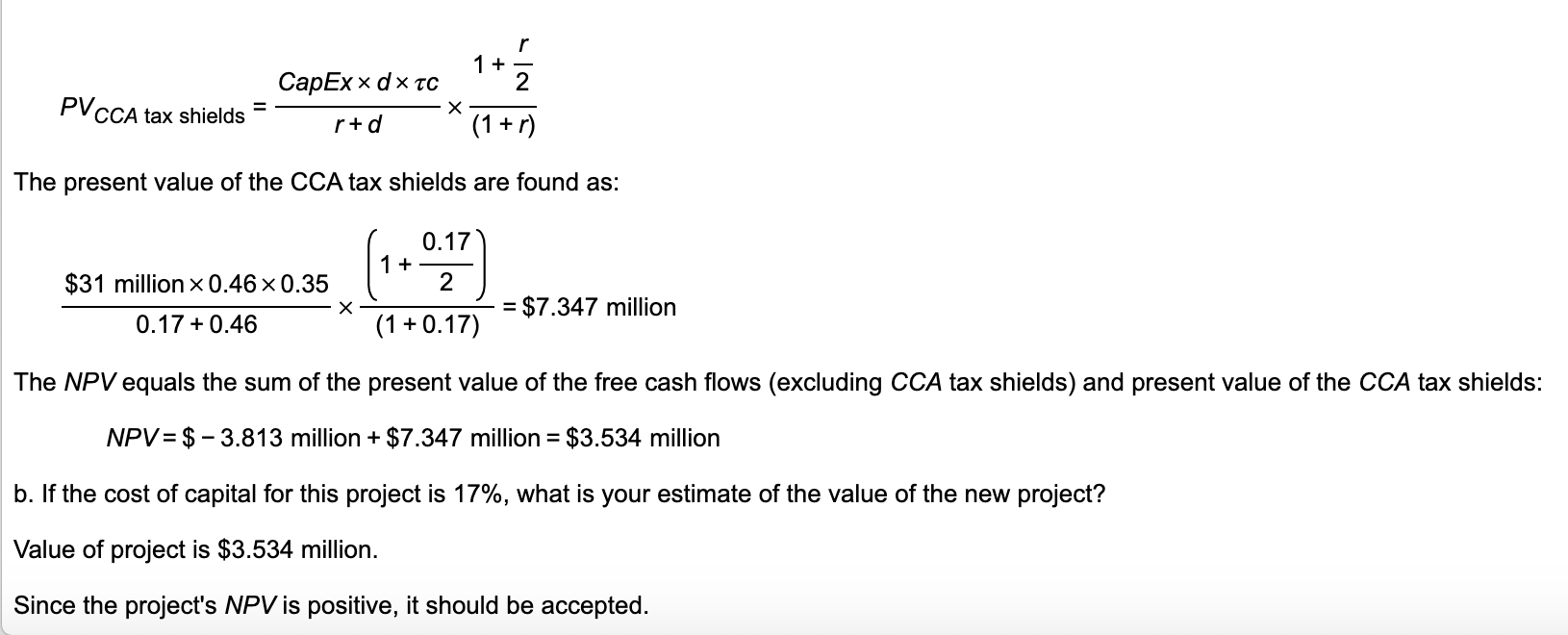Help Please!

Question Example Step-by-step do not answer this question



You are a manager at Northern Fibre, which is considering expanding its operations in synthetic fibre manufacturing. Your boss comes into your office, drops a consultant's report on your desk, and complains, "We owe these consultants $1.2 million for this report, and I am not sure their analysis makes sense. Before we spend the $18 million on new equipment needed for this project, look it over and give me your opinion." You open the report and find the following estimates (in millions of dollars): 1 2 9 10 32.000 19.200 Sales revenue - Cost of goods sold = Gross profit - General, sales, and administrative expenses - Depreciation Net operating income - Income tax = Net income 32.000 19.200 12.800 1.440 1.800 9.5600 3.346 6.214 32.000 19.200 12.800 1.440 1.800 9.5600 3.346 6.214 12.800 1.440 1.800 32.000 19.200 12.800 1.440 1.800 9.5600 3.346 6.214 = 9.5600 3.346 6.214 All of the estimates in the report seem correct. You note that the consultants used straight-line depreciation for the new equipment that will be purchased today (year 0), which is what the accounting department recommended for financial reporting purposes. CRA allows a CCA rate of 30% on the equipment for tax purposes. The report concludes that because the project will increase earnings by $6.214 million per year for ten years, the project is worth $62.14 million. You think back to your glory days in finance class and realize there is more work to be done! First you note that the consultants have not factored in the fact that the project will require $10 million in working capital up front (year 0), which will be fully recovered in year 10. Next you see they have attributed $1.44 million of selling, general and administrative expenses to the project, but you know that $0.72 million of this amount is overhead that will be incurred even if the project is not accepted. Finally, you know that accounting earnings are not the right thing to focus on! b. If the cost of capital for this project is 8%, what is your estimate of the value of the new project? Value of project = $ million (Round to three decimal places.) You are a manager at Northern Fibre, which is considering expanding its operations in synthetic fibre manufacturing. Your boss comes into your office, drops a consultant's report on your desk, and complains, "We owe these consultants $2.1 million for this report, and I am not sure their analysis makes sense. Before we spend the $31 million on new equipment needed for this project, look it over and give me your opinion." You open the report and find the following estimates (in millions of dollars): Sales revenue Cost of goods sold = Gross profit General, sales, and administrative expenses - Depreciation = Net operating income - Income tax = Net income 1 36.000 21.600 14.400 2.480 3.100 8.8200 3.087 5.733 2 36.000 21.600 14.400 2.480 3.100 8.8200 3.087 5.733 9 36.000 21.600 14.400 2.480 3.100 8.8200 3.087 5.733 10 36.000 21.600 14.400 2.480 3.100 8.8200 3.087 5.733 All of the estimates in the report seem correct. You note that the consultants used straight-line depreciation for the new equipment that will be purchased today (year o), which is what the accounting department recommended for financial reporting purposes. CRA allows a CCA rate of 46% on the equipment for tax purposes. The report concludes that because the project will increase earnings by $5.733 million per year for ten years, the project is worth $57.33 million. You think back to your glory days in finance class and realize there is more work to be done! First you note that the consultants have not factored in the fact that the project will require $16 million in working capital up front (year o), which will be fully recovered in year 10. Next you see they have attributed $2.48 million of selling, general and administrative expenses to the project, but you know that $1.24 million of this amount is overhead that will be incurred even if the project is not accepted. Finally, you know that accounting earnings are not the right thing to focus on! b. If the cost of capital for this project is 17%, what is your estimate of the value of the new project? There are two ways to solve for the NPVby either indirectly computing the FCF excluding the CCA tax shields and then adding the present value of all the CCA tax savings to it OR by directly computing the present value of the free cash flows from years 1 to 10 and then adding the present value of the remaining CCA tax shields from time 11 in perpetuity. We will use the first method. Indirectly compute the free cash flow excluding CCA tax shields by using the following equation: Free Cash Flow excluding CCATS = (Revenues - Costs)










